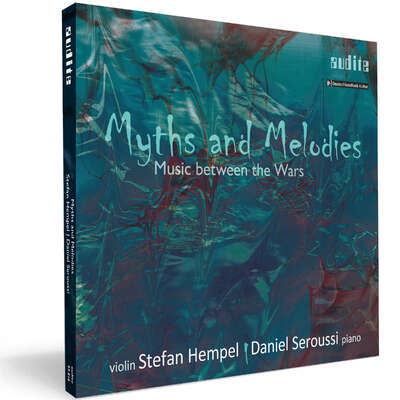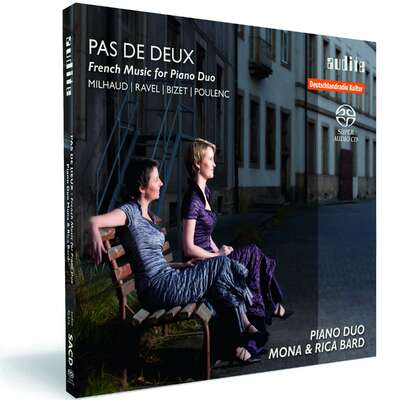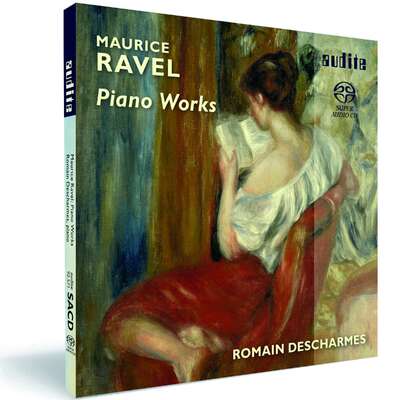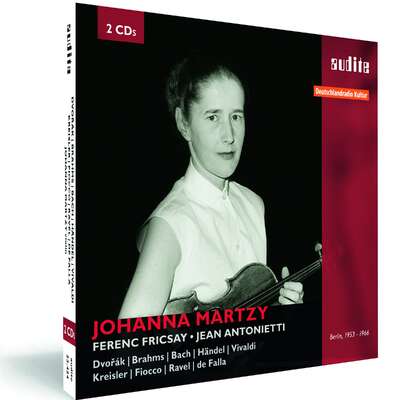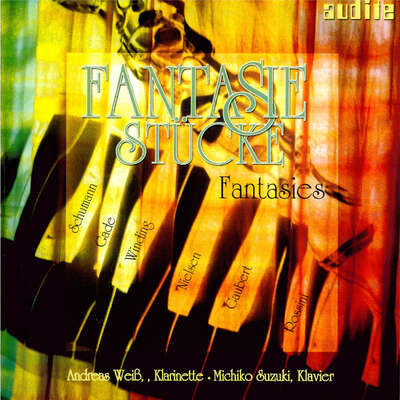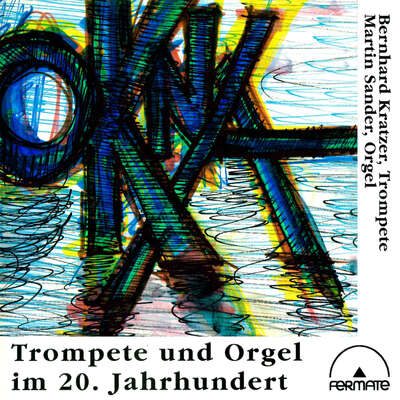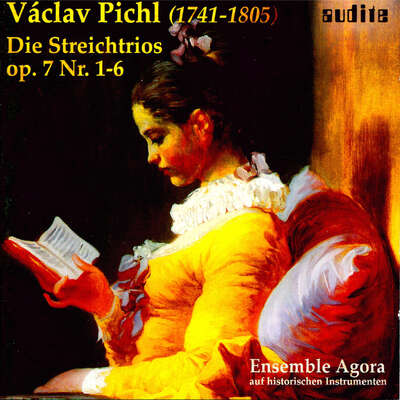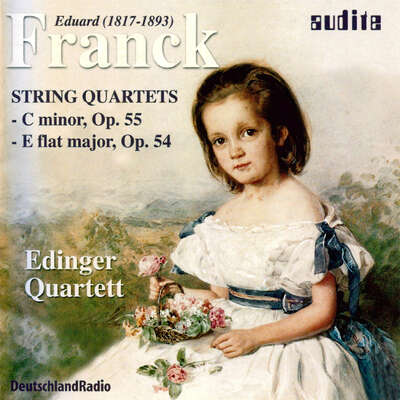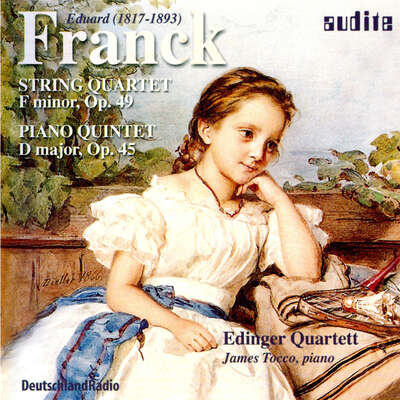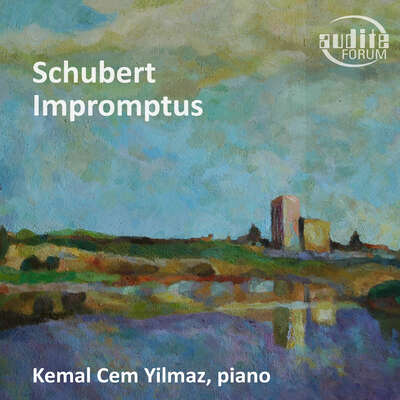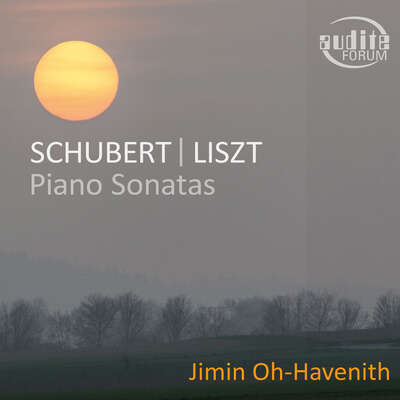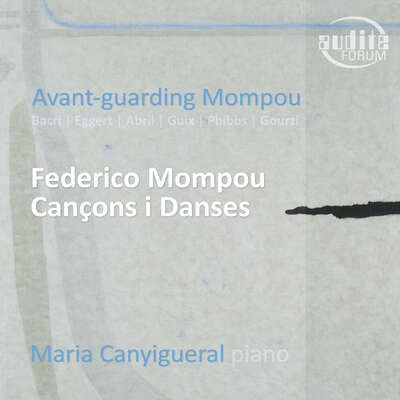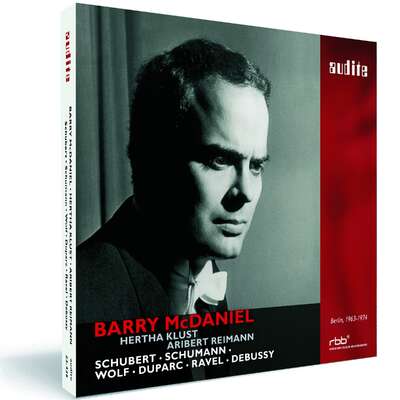
The Mandelring Quartett’s new, two-part recording project is dedicated to French repertoire. Part 1 presents Maurice Ravel’s string quartet, a stroke of genius by its 27-year-old composer marking a new chapter in French chamber music, as well as Fernand de La Tombelle’s almost contemporaneous refined and colourful Op. 36 quartet – a real discovery!more
"The Mandelring now adds another outstanding recording. [...] On the one hand, the interpretation is marked by fervor, ardor, and tense; [...] on the other hand, transparency, sophistication, and sensuality are not lacking." (Pizzicato)
Details
| Ravel & La Tombelle: String Quartets | |
| article number: | 97.709 |
|---|---|
| EAN barcode: | 4022143977090 |
| price group: | BCA |
| release date: | 9. April 2021 |
| total time: | 57 min. |
Bonus Material
Informationen
Although Maurice Ravel, in his string quartet, explicitly refers to the quartet written ten years earlier by his colleague, Claude Debussy, he opts to follows his own, new path and arrives at a distinctive Ravelian tone: colourful, refined and saturated with that flair of the artificial which also characterises his beloved porcelain and glass artworks, ornamental shrubs and bonsai trees. At the same time, the quartet is meticulously constructed and so rich in ingenious details that it offers room for discovery even after repeated listening.
A great unknown and certainly one of the most fascinating protagonists of French musical life in the late nineteenth and early twentieth centuries is Fernand de La Tombelle: pianist, organist, writer, astronomer, visual artist, author of a guide on a traditional recipe involving foie gras and truffles, passionate cyclist - and prolific composer: his œuvre comprises more than 500 works, including a large number of chamber music works. His string quartet written in 1895 is rooted in the Viennese classical tradition and yet is unmistakably French: highly expressive, harmonically colourful and extremely elegant at the same time - a work that makes one want to discover more by La Tombelle!
Reviews
www.opusklassiek.nl | januari 2022 | Harry-Imre Dijkstra | January 1, 2022 | source: https://www.opus...
Een prettige vondst, dit kwartet, pas de tweede opname ooit bovendien!Mehr lesen
Die Rheinpfalz | Freitag, 17. Dezember 2021 | Peter Pohlit | December 17, 2021 | source: https://www.rhei...
CD-TIPP
Farbenkosmos auf 16 Saiten: Neue Einspielungen des Neustadter Mandelring Quartetts
Mit „französischem Repertoire“ im Doppelpack, wie es die Booklets recht nüchtern ausweisen, widmet sich das Neustadter Mandelring Quartett inMehr lesen
Classica – le meilleur de la musique classique & de la hi-fi | N° 236 - Octobre 2021 | Jacques Bonnaure | October 1, 2021
Une véritable révélation.Mehr lesen
Aachener Zeitung | Samstag, 3. Juli 2021 · Nummer 152 | Armin Kaumanns | July 3, 2021 ALBUM-CHECK I: Klassik
Das Mandelring Quartett wirft sich mit Verve ins Geschehen, genießt ganz offenbar diesen Zuwachs im Repertoire.Mehr lesen
Diapason | N° 702 ÉTÉ 2021 | Francois Laurent | July 1, 2021
Après des cycles Brahms, Mendelssohn, Janacek, Chostakovitch, Schubert et même Onslow (tous pour Audite), le Quatuor Mandelring entame une sérieMehr lesen
La nonchalance réclamée par le premier mouvement, Trés doux, pâtit en revanche de cette tension générale du discours, de même que les élans lyriques et la rêverie du Très lent, comme brusqués, dépourvus de tendresse. A ce Ravel au coeur sec, nous préférons celui, plus souple et chaleureux des collègues berlinois d'Emmanuel Pahud (lndesens, Diapason d'or).
Dans les quatre mouvements du Quatuor en mi majeur (1896) de Fernand de La Tombelle, la comparaison avec la version des Satie (Ligia, cf. n° 608) tourne en revanche à l'avantage des nouveaux venus. Le trait vif et l'austère clarté des Mandelring mettent en valeur la vigueur beethovénienne du deuxième mouvement - avec son clin d'oeil à celui de la Symphonie n° 9. Ecoutez comme ils éclairent les motifs d'allure populaire qui irriguent le rondo final, plein d'esprit, pour le faire rebondir avec une verve quasi haydnienne. L’Adagio con molto espressione gagnerait parfois à desserrer les dents, mais le raffinement des nuances et des contrastes, la gravité de son épisode central nous tirent l'oreille. Les curieux ne regretteront pas le détour.
Audio | 7/2021 | Andreas Fritz | July 1, 2021 KLANG TIPP
Den „Apachen“, seinen Pariser Freunden, hat Ravel das Streichquartett als erstes am Klavier vorgespielt. Das farbenreiche, rhythmisch lebhafteMehr lesen
Crescendo Magazine | Le 12 juin 2021 | Jean Lacroix | June 12, 2021 | source: https://www.cres... Le Quatuor Mandelring freine l’émotion chez Ravel et de La Tombelle
Le Mandelring Quartett, fondé en 1983 et récompensé à de multiplesMehr lesen
Fono Forum | Juni 2021 | Elisabeth Richter | June 1, 2021
Die Informationen über Fernand de La Tombelle (1854-1928) sind spärlich, und erst in letzter Zeit kümmern sich neugierige Musiker um dasMehr lesen
La Tombelles Streichquartett von 1894 atmet einerseits den Duft des französischen Impressionismus, bedient sich aber auch traditioneller Satztechniken. Andererseits hört man eine Nähe zur deutschen Spätromantik. Nicht selten denkt man an die schwüle Atmosphäre und den visionären Ton von Schönbergs Sextett „Verklärte Nacht", das jedoch erst fünf Jahre später entstand. Das Mandelring Quartett sorgt im dichten Satz-Gewebe immer für Durchsichtigkeit und für Konturen mit markanten Akzentuierungen. Es kristallisiert durch gestisch-klares Spiel wichtige Linien heraus.
1902 blickte Ravel mit seinem einzigen Streichquartett noch weit stärker als La Tombelle in eine neue Klangwelt und löste damit in Paris auch Kontroversen aus. Debussy war begeistert, Faure, der Widmungsträger, kritisch. Mit ungeheuer feinen Antennen für das Leichte, Luftige, Duftige, für den Hauch des Rätselhaften nähert sich das Mandelring Quartett Ravels genialem Stück. Jede Sekunde zeigt die intensive Auseinandersetzung. Zwingend sind die wellenartigen Steigerungen aufgebaut. Man „riecht" förmlich, wie das Quartett für die reich „duftenden" und schillernden Farben dieser Musik die richtigen Nuancierungen erspürt. Die Strukturen werden durch abgestufte Artikulationen ganz plastisch. Flirrende Tremoli, klirrende Pizzicati und ein dennoch immer homogener Klang entführen auf berührende Weise in den Zauber dieses Quartetts.
Stretto – Magazine voor kunst, geschiedenis en muziek | mei 19, 2021 | Michel Dutrieue | May 19, 2021 | source: https://www.stre... Ontdek magnifieke muziek van Fernand de La Tombelle op Bru Zane, en op de cd, “Ravel & La Tombelle”, door het Mandelring Quartett, op het label audite. Subliem !
Het nieuw tweedelige opnameproject van het Mandelring Quartett is gewijd aan het Frans repertoire. Dit deel 1 presenteert het Strijkkwartet vanMehr lesen
Een grote onbekende en zeker een van de meest fascinerende hoofdrolspelers van het Frans muziekleven in de late 19de en vroege 20ste eeuw was Fernand de La Tombelle, pianist, organist, schrijver, astronoom, beeldend kunstenaar, auteur van een gids over een traditioneel recept met foie gras en truffels, gepassioneerd wielrenner – en productief componist. Zijn oeuvre omvat meer dan 500 werken.
Antoine Louis Joseph Gueyrand Fernand Fouant de La Tombelle (1854-1928) maakte kennis met de muziek door zijn moeder, Louise Gueyraud, een briljante leerlinge van Liszt en Thalberg. In 1872 besloot hij zich aan muziek te wijden. Hij kreeg privélessen piano, orgel en harmonie van Alexandre Guilmant en werd toegelaten tot het Conservatorium van Parijs en volgde harmonie, contrapunt, fuga en compositie o.a. bij Théodore Dubois. Op 12 juli 1880 trouwde hij in Parijs met de zangeres en schrijfster, Henriette Delacoux de Marivault, (pseudoniem Camille Bruno), met wie hij twee kinderen kreeg, Henry en Denise. Ze schreef gedichten die op muziek gezet werden door haar man of door Jules Massenet, die ze ook vertolkte omdat ze een mooie stem had.
De Fantaisie voor piano en orkest (1888) en zijn Quartet in E minor (1894) leverden hem tweemaal de gouden medaille van de Grand Prix Pleyel op. Als organist bundelde hij zijn krachten met Guilmant voor de Trocadéro-recitals in 1878. Hij werd nooit titularis, maar van 1885 tot 1898, was hij wel de assistent en de vervanger van Théodore Dubois aan het Cavaillé-Coll-orgel van de kerk van de Madeleine in Parijs en verving hij vaak Guilmant voor recitals op het orgel église de la Sainte-Trinité. Daarnaast gaf hij regelmatig orgelconcerten in heel Frankrijk.
Hij nam in 1894 deel aan de oprichting van de Schola Cantorum in 1894, met Charles Bordes, Vincent d’Indy en Alexandre Guilmant, die voornamelijk aan programma’s en het repertoire voor orgel werkten. Hij doceerde er van 1896 tot 1904 harmonie, droeg bij aan de moderne, religieuze muziek en schreef artikelen in La Tribune de Saint-Gervais, het blad van de Schola Cantorum. In 1896 won hij de Chartierprijs van de Académie des beaux-arts voor de kwaliteit van zijn productie op het gebied van kamermuziek. Naast zijn muzikale bezigheden was hij actief geïnteresseerd in poëzie, folklore, beeldhouwkunst, fotografie en astronomie. De laatste jaren van zijn leven bracht La Tombelle door op het kasteel dat hij erfde van zijn grootvader langs moeders kant, het Château de Fayrac in de Dordogne. Hij werd begraven op de begraafplaats van Montparnasse in Parijs en een weg in het 17e arrondissement in Parijs, het Fernand-de-la-Tombelle-plein, draagt zijn naam als eerbetoon.
Fernand de La Tombelle componeerde weinig kamermuziek. We kennen van hem een Suite pour trois Violoncelles, uit 1921, een Berceuse pour violon et piano, uit 1895, een Trio pour piano, violon et violoncelle, op. 35 (1894), het hier opgenomen Quatuor en mi mineur uit 1894), médaille d’or du Prix Pleyel, en een Sonate pour piano et violon en ré mineur op. 40, uit 1898. Zijn in 1895 geschreven strijkkwartet met een magnifiek adagio, is geworteld in de Weense klassieke traditie en toch onmiskenbaar Frans, zeer expressief, harmonisch kleurrijk, verfijnd en uiterst elegant.
Het schitterend, in 1983 opgericht, Duits Mandelring Quartett, oprichter en artistiek leider van het Hambacher Musikfest in Hambach an der Weinstraße, bestaat uit Sebastian Schmidt en Nanette Schmidt, viool, Andreas Willwohl, altviool en Bernhard Schmidt, cello. Twee aanraders.
Audiophile Audition | May 7, 2021 | Gary Lemco | May 7, 2021 | source: https://www.auda...
The various instrumental colors from the Mandelring players seem to merge and melt into a mesmeric haze, a transparent sound we haven’t heard since the Quartetto Italiano played this great work fifty years ago. Mehr lesen
www.musicweb-international.com | Tuesday May 4th | Roy Westbrook | May 4, 2021 | source: http://www.music...
The Mandelring Quartet are most familiar to me for their superb complete cycle of the Shostakovich quartets, and their late Schubert quartets, both onMehr lesen
La Tombelle had a major career as a pianist and organist, touring all over France in the latter role, and composed over 500 works. That sheer fluency can be heard here, in his quartet written at age 41 in 1895, and winner of a prize for outstanding chamber music from the Académie des Beaux-Arts. It is dedicated to Vincent d’Indy, one of La Tombelle’s co-founders of the Schola Cantorum, also in 1895, a private music academy with a focus on one of La Tombelle’s enthusiasms, early music. It is a fairly big work playing for half an hour, and just interesting enough to regret that like Ravel, Debussy, Franck, Fauré, Chausson and Dutilleux, La Tombelle left only one example of the genre.
La Tombelle’s quartet is broadly designed on the template of a Viennese classical work, with four movements, the first the most substantial, a brief scherzo, expressive slow movement, and lively Allegro con brio finale. There are cyclic elements also, for César Franck was one of La Tombelle’s models. There is a long slowish introduction (Largo ma non troppo), and the rich harmony and complex string texture are obviously skilful, even if the feeling is (for my taste) sometimes saccharine. The first subject of the Allegro proper has a dotted rhythm hinted at in the introduction, but soon elaborated and extended, and the second theme (marked dolce) arrives at 5:38 and is given to violin and then cello. The Mandelrings keep it flowing, with no ‘signposting’ of musical landmarks by slowing down, which is proper in a work classical enough to have a real development – and even to accommodate a return of music from the introduction (at 9:20). The scherzo has two contrasting themes, a hint in the second of the hurdy-gurdy suggests the booklet note – La Tombelle’s enthusiasms included folklore. At times there is a pizzicato-enlivened texture, a link to the Ravel. The Adagio con molto espressione sounds like yet another passionate example of 1890’s French Wagnerism in its chromatic moments, and the finale has those Franckian recalls of material from the first two movements. This is an expert performance of a very satisfying work, if not one that is quite individual enough to disturb the long-established league table of the best string quartets from France.
At or near the head of that not very long table stands Ravel’s quartet. The Mandelring Quartet provide an impressive account distinguished by their characteristic technical precision and satisfying blend, with some interesting details that not every group has noticed. An early example in the first movement is the imitative cello counterpoint as the first subject begins to expand (0:32), but there several others that will catch the ear of those who know the piece well. It’s an interpretation that will I think be enjoyed by most listeners even if it does displace the various favourites collectors will have.
In recent years I have most often turned to the Quatuor Ébène (Virgin Classics 2008, coupled with the Fauré and the Debussy quartets). They find more light and shade, in part because they give themselves more time to do so. Thus while the Mandelring take 7:35 over the first movement, the Quatuor Ébène’s 8:50 enables them to reflect the Très doux marking rather more, just as their slow movement’s 9:47 (Très lent) allows them to give us more of that quintessential Ravelian tendresse in a very rapt account of exquisite poise and feeling. Conversely the Ébène’s 4:40 is more Vif et agitè than the Mandelring’s 5:12.
So the Mandelring Quartet offer here a viable alternative view of the Ravel, coupled to an intriguing rarity, both very well played and well recorded (though I hope Audite has not entirely abandoned the hi-res SACD format.) There is short but informative booklet note, which is very interesting on the background of Fernand La Tombelle , whose quartet will for most collectors be the principal attraction of this disc.
www.musicweb-international.com | Thursday April 15th | Michael Cookson | April 15, 2021 | source: http://www.music...
For its latest album, the Mandelring Quartett turns its attention to French chamber music, in the first of a two-part issue. Maurice Ravel’sMehr lesen
The Mandelring Quartett was founded in 1983 in Neustadt; unsurprisingly, its discography strongly favours Austro/German repertoire - although not exclusively. This album follows its previous foray into French music a few years ago with works by George Onslow, the French born composer of English descent. The Mandelring has announced on its website that the forthcoming second album will feature Debussy’s string quartet and a pair of string quartets by Jean Rivier, another name new to me.
La Tombelle and Ravel were near-contemporaries, the former being the elder by twenty years. Both were Parisians, but La Tombelle was born in the capital whereas the Basque-born Ravel moved there as a young child. Both were students at the Paris Conservatoire, where their reputations and successes could not have been more different. La Tombelle studied composition with Theodore Dubois and organ with Alexandre Guilmant, while Ravel’s teachers included, most notably, Gabriel Fauré who was firmly supportive of his student. La Tombelle was well regarded and won prizes whereas Ravel’s works were strongly criticised by director Théodore Dubois and others in the Conservatoire hierarchy and he was actually expelled, readmitted, then expelled a second time. As pianists, Tombelle progressed to become a concert pianist and organist, whereas Ravel, who had given piano recitals from age fourteen and sometimes played his own works in concert, was to achieve greater success in writing for the piano rather than playing it.
La Tombelle’s name is unfamiliar to many, I am sure. Currently his music is beginning to gain wider attention and a mini-revival seems to be underway. Just over a year ago, my first encounter with La Tombelle, his music proved to be a rewarding experience when I reviewed a 3 CD-book release of La his ‘Chamber, Choral and Symphonic Music and Mélodies’, part of the Bru Zane ‘portraits’ series.
Written in 1895, La Tombelle’s String Quartet in E major was dedicated to his friend Vincent d’Indy and the following year the work won the esteemed Chartier Prize for exceptional chamber music. Whilst I am not making any claims for its greatness, it is so amiably Romantic and melodic, without an unpleasant tone in the score, that it is captivating. This is an insightful performance, full of expressive detail; the Mandelring produce tasteful phrasing and a sweet, warm, beautifully blended string tone. I am often reminded of the sound-world of Camille Saint-Saëns, who gave La Tombelle guidance. One soon becomes conscious of the constant, fruitful rapport between the quartet members. There is an invigorating freshness to their playing in the Allegros and Scherzo which generates plenty of spirit and buoyancy. The protean character the Allegro con brio – Finale is especially notable; it is full of an energy which turns to sadness and loneliness, then becoming resolutely optimistic. In the Adagio, the heart of the score, the Mandelring impart a melting tenderness to the sense of longing and the players combine to glorious effect. The intense level of yearning infused in his writing surely indicates that La Tombelle is portraying a love affair.
There is an alternative “world premiere recording” of La Tombelle’s String Quartet from the Quatuor Satie on the Ligia Digital label, recorded in 2011 in the Auditorium Cziffra, La Chaise-Dieu. I have heard only sound clips, but the album was reviewed here in 2013. I am not sure of its availability as a new CD, but used copies may be available, and it can be downloaded.
Ravel’s distinctive style of composition is often acknowledged as inhabiting the middle ground between the Romantic and the neo-classical eras. A product of his Paris Conservatoire years, Ravel’s only String Quartet could be said to combine the traditional forms so characteristic of his master Fauré (to whom it is dedicated) with a broad range of tone colours and moods which owes a debt of gratitude to Claude Debussy’s string quartet. Achieving acclaim when introduced in 1904 at the Paris Société Nationale de Musique, it is now widely considered a masterwork of the genre.
This captivating and melodic early work is renowned for its freshness and can make quite an impact at first hearing. Throughout the four-movement score, the Mandelring creates a magical and lavish display of warm, vibrant colour. Ravel employs a cyclical use of themes in the manner of Debussy’s String Quartet. Designed in a sonata form with a pair of main themes, the first movement Allegro moderato – très doux (very sweet) is played both adroitly and passionately by the Mandelring. The glorious introduction is played as beautifully as I have heard. The second movement, serving as a Scherzo, marked Assez vif – très rythmé (Rather lively – very rhythmic), contains pizzicato effects and the Mandelring demonstrates excellent concentration and timing. In the rapturous slow movement marked Très lent (very slow) they create by turns a gracious feeling of introspection and poetic rapture. Worth singling out is the simply glorious sound of the resonant cello. Bursting onto the scene is the Finale – Vif et agité (Lively and agitated), which swings between a squally, rather unsettling character to a much-needed composed temperament. The Mandelring’s playing here is immediate and resolute, serving to heighten the finale’s effect.
On balance, my first choice remains the exceptional recording from 2008 on Virgin Classics from the Quatuor Ébène (review), one of the world’s foremost chamber music ensembles. Their performance is impressively vital and colourful, enhanced by a gratifying sense of purpose and their second movement makes a greater impact than the Mandelring’s.
As seasoned performers, the Mandelring Quartett is entirely responsive to the challenges presented by both the La Tombelle and the Ravel scores. The level of empathy required to encompass the range of moods and tone colour possibilities is always in evidence. Impressive, too, are the well managed dynamics. The radio broadcast sound quality is first class. The booklet essay by Eva Blaskewitz is interesting and helpful.
This is a most attractive album of these two French quartets and the second release cannot come too soon.
www.pizzicato.lu | 09/04/2021 | Remy Franck | April 9, 2021 | source: https://www.pizz... Mandelring Quartett: Packender Ravel, gelungene Tombelle-Auferstehung mit Himmelfahrt
An spannenden Interpretationen des Streichquartetts von Maurice Ravel herrscht kein Mangel. Das Mandelring Quartett fügt nun eine weitereMehr lesen
Fernand de la Tombelle (1854-1928) hat an die 600 Werke hinterlassen. Der rührige Baron, der auch Pianist und Organist war, Schriftsteller, Photograph und Maler, Amateur-Astronom und anderes mehr, ist ein französischer Romantiker, der Kammermusik, Opern, Chormusik und Lieder komponiert hat.
Wie Ravel hat De la Tombelle nur ein Streichquartett komponiert, aber anders als bei Ravel gibt es kaum Aufnahmen davon und sicher keine herausragende.
Nun ändert sich die Lage. Das Mandelring Quartett steigt mit viel Schwung und lyrischem Elan in den ersten Satz ein und spielt das Scherzo ebenso tempo- wie kontrastreich. Darauf folgt ein emotionales Adagio, das zu einem Finalsatz führt, der eher ungeduldig und irritiert wirkt, um schließlich in wie fragend formuliert ruhigeren Passagen den Weg frei zu machen für eine hoch fliegende, unbeschwerte Coda. Damit hat das Tombelle-Quartett endlich eine werkgerechte Auferstehung mit Himmelfahrt geschafft.
There is no shortage of exciting interpretations of Maurice Ravel’s string quartets. The Mandelring now adds another outstanding recording. The four string players track down the dramatic effects and return to the score the spontaneity of Ravel’s inspiration. On the one hand, the interpretation is marked by fervor, ardor, and tense, often feverish power that brings out the best of every note; on the other hand, transparency, sophistication, and sensuality are not lacking. For me, this is one of the most gripping interpretations of this composition, and it gives the lie to all those who claim that the quartet embodies nothing but sensuality and grace.
Fernand de la Tombelle (1854-1928) left behind close to 600 works. The enterprising baron, who was also a pianist and organist, a writer, photographer and painter, amateur astronomer, and more, is a French romantic who composed chamber music, operas, choral music, and songs.
Like Ravel, de La Tombelle composed only one string quartet, but unlike Ravel, there are very few recordings of it and certainly none outstanding.
Now the situation is changing. With the Mandelring Quartet the first movement has a lot of verve and lyricism, the Scherzo is alert and contrasted. They are followed by an emotional Adagio that leads to a final movement that seems rather impatient and irritated, finally clearing the way for a high-flying, light-hearted coda. With this, the Tombelle Quartet has finally achieved of this work not only a beautiful resurrection but also a heavenly ascension.
Rondo | 2/2021 | Eleonore Büning | April 1, 2021
Unterm Strich
Ramsch oder Referenz? CDs vom Schreibtisch geräumt
Für ihre neueste CD haben sie sich ein Herzstück des französischen Quartett-Repertoires vorgeknöpft und neben eine Rarität gestellt. Beides ist der pure Luxus.Mehr lesen
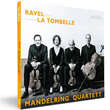























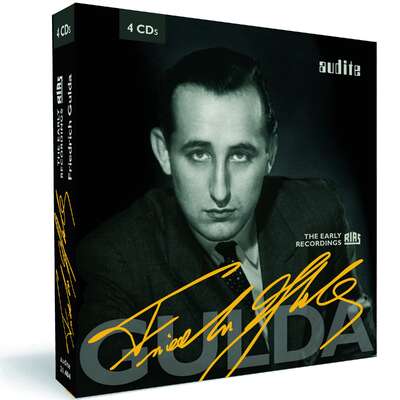
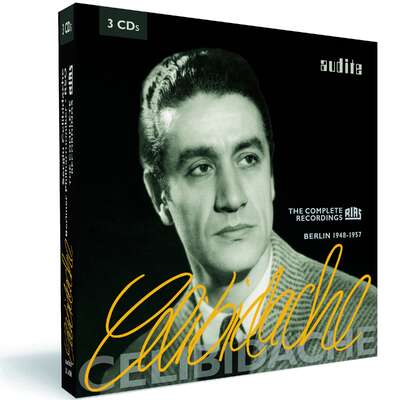

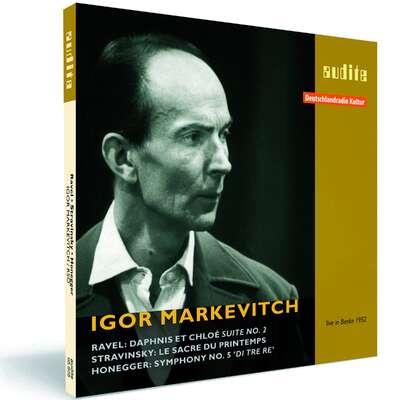
![23446 - k[NOW]n Piano](/image/product/3d/carousel/23446-known_piano.jpg)
